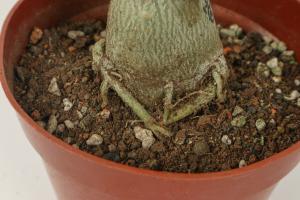Should You Bottom Water Snake Plants?
Snake plants are a popular houseplant choice due to their low-maintenance needs and air-purifying effects. As with any plant, proper watering is essential for healthy growth. While there are a variety of methods for watering snake plants, one technique that is often debated among gardeners is bottom watering. In this article, we will explore the pros and cons of bottom watering snake plants and help you decide if it is the right choice for your plant care routine.
What is Bottom Watering?
Bottom watering, as the name suggests, involves watering the plant from the bottom up. This method involves placing the pot in a container filled with water and allowing the plant to soak up the water through its drainage holes. The idea behind this technique is to provide the plant with water from the roots up, allowing it to absorb only as much water as it needs and preventing overwatering. The excess water in the container is discarded after the plant has had a chance to absorb the necessary amount of moisture.
Pros of Bottom Watering Snake Plants
One of the main advantages of bottom watering snake plants is that it can help prevent overwatering. Overwatering, or allowing the plant's soil to remain too wet for too long, can lead to root rot and other health issues. By bottom watering, you can provide the plant with just the right amount of water without risking waterlogged soil. Additionally, bottom watering can help distribute moisture evenly throughout the soil, ensuring that all roots get access to the water they need. This can help promote healthy growth and prevent dry patches.
Cons of Bottom Watering Snake Plants
While bottom watering has its benefits, there are also some potential downsides to consider. One of the main concerns with this method is that it can cause a buildup of mineral deposits and salts in the soil. Over time, these deposits can harm the plant's roots and hinder its ability to absorb nutrients. Additionally, bottom watering may not be effective for plants with deep root systems or those that require more frequent watering. Finally, bottom watering may not be suitable for plants with delicate foliage or those that are prone to rotting.
Is Bottom Watering Right for Your Snake Plant?
Ultimately, the decision to bottom water your snake plant will depend on a variety of factors, including the plant's size, soil type, and watering needs. If you have a small plant with a shallow root system and well-draining soil, bottom watering may be an effective option for you. However, if you have a larger plant with deep roots or a plant that requires more frequent watering, top watering or misting may be a better choice. If you do choose to bottom water your plant, be sure to monitor the soil for any signs of mineral buildup and adjust your watering routine as needed.
Conclusion
Bottom watering can be an effective way to water your snake plant while preventing overwatering and promoting healthy growth. However, it is important to remember that this method may not be suitable for all plants and can lead to issues with mineral buildup over time. As with any plant care technique, it is important to monitor your snake plant's progress and adjust your routine as needed to ensure optimal health and growth.

 how many times do yo...
how many times do yo... how many planted tre...
how many planted tre... how many pine trees ...
how many pine trees ... how many pecan trees...
how many pecan trees... how many plants comp...
how many plants comp... how many plants can ...
how many plants can ... how many plants and ...
how many plants and ... how many pepper plan...
how many pepper plan...






























